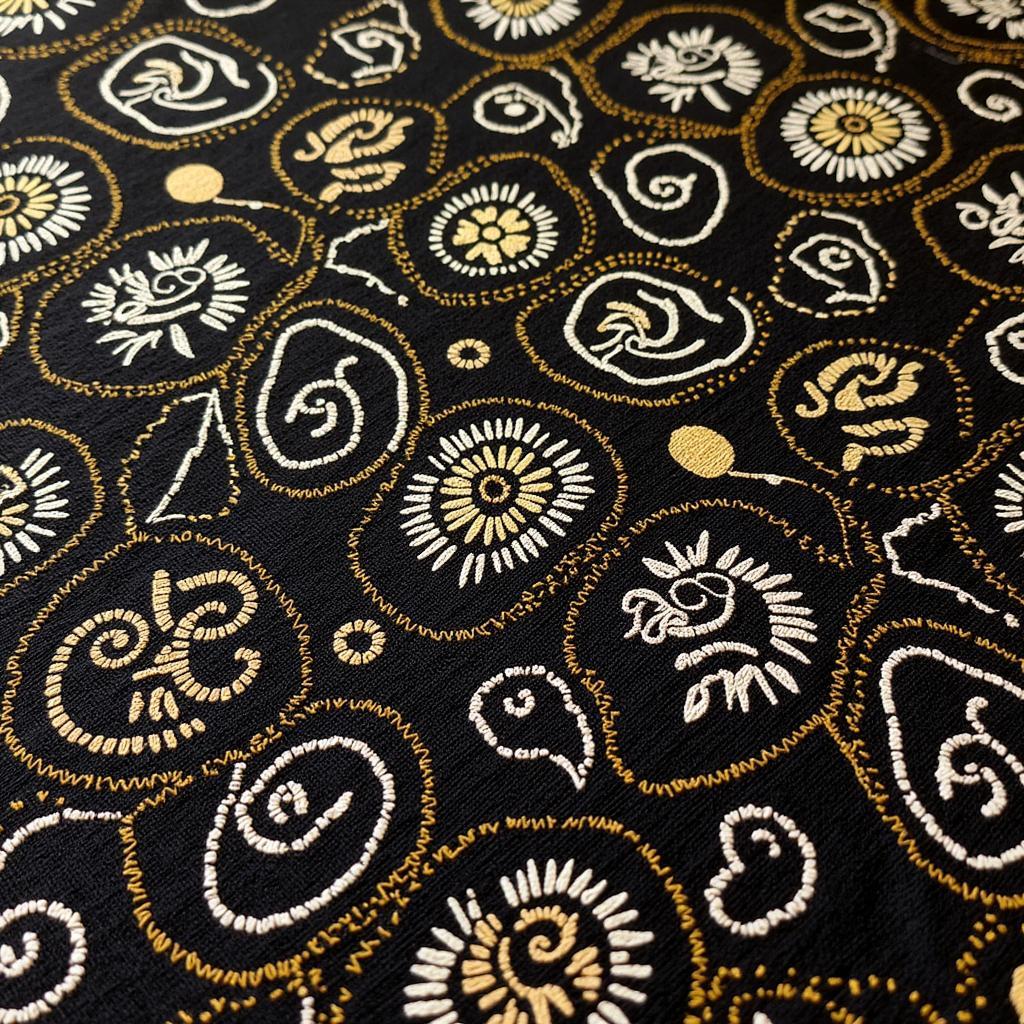The Remarkable Story of African Elephant Skin
African Elephant Skin, a thick, wrinkled, and surprisingly sensitive armor, is more than just a covering. It’s a vital organ that plays a crucial role in the elephant’s survival, behavior, and overall well-being. This article delves deep into the fascinating world of African elephant skin, exploring its unique properties, functions, and the challenges it faces in a world increasingly impacted by human activities.
The African elephant’s skin, often exceeding an inch in thickness in some areas, acts as a robust shield against predators, parasites, and the harsh African environment. However, this seemingly impenetrable barrier is remarkably sensitive, capable of detecting even the slightest touch. This sensitivity allows elephants to communicate through subtle tactile interactions, strengthening social bonds within their herds. Their skin also plays a crucial role in thermoregulation.
The Intricate Details of African Elephant Skin
The texture of African elephant skin contributes significantly to its remarkable functions. Deep wrinkles and folds increase the surface area, maximizing the skin’s ability to retain moisture and dissipate heat. These wrinkles also trap mud and water, creating a protective layer against sunburn and insect bites. This adaptation is especially vital in the arid and semi-arid regions where many African elephants reside.
The skin’s pigmentation, ranging from gray to brown, provides camouflage and protection from the sun’s harmful UV rays. Interestingly, the skin of African forest elephants tends to be darker than that of their savanna counterparts, possibly due to the lower light levels in their dense forest habitats. Furthermore, while seemingly hairless, African elephant skin is actually covered in sparse, bristly hairs that aid in temperature regulation and sensory perception. For more insights into the forest elephant’s unique skin, check out african forest elephant skin.
Why is African Elephant Skin Important?
African elephant skin isn’t just about protection; it’s fundamental to the elephant’s survival. Its ability to retain water is crucial in arid environments. The deep wrinkles trap moisture, helping to keep the elephant hydrated during periods of drought. The skin’s thermoregulatory function is equally important, allowing elephants to dissipate heat in the scorching African sun, preventing overheating.
Moreover, the skin plays a crucial role in social interactions. Elephants communicate through touch, using their sensitive trunks and skin to convey a range of emotions and signals. They rub against each other, caress their young, and use their trunks to explore and investigate the world around them. See magnificent bull elephants in african bull elephant pictures.
Threats to African Elephant Skin
Tragically, the very feature that makes African elephant skin so remarkable also makes it a target for poachers. The illegal ivory trade poses a severe threat to elephant populations across Africa. Poachers cruelly kill elephants for their tusks, leaving behind a devastating impact on these magnificent creatures and the ecosystems they inhabit.
How Can We Protect African Elephants?
Protecting African elephants and their unique skin requires a multi-pronged approach. Strengthening anti-poaching efforts, raising awareness about the devastating impact of the ivory trade, and supporting conservation initiatives are all crucial steps. We can also support organizations working to protect elephant habitats and promote sustainable co-existence between humans and elephants.
“The skin of an elephant is a testament to its resilience and adaptability,” says Dr. Anika Nkosi, a leading expert in African elephant biology. “Protecting these magnificent creatures means safeguarding their unique adaptations and ensuring their survival for generations to come.”
Conclusion: The Future of African Elephant Skin
The future of African elephant skin, and indeed the future of African elephants, depends on our collective action. By understanding the importance and vulnerability of this remarkable organ, we can work together to protect these iconic animals and ensure that their story continues to be written on the landscapes of Africa. Discover the beauty of these creatures in african elephant group black and white and african elephant hd wallpapers.
FAQ:
- What is the main function of African elephant skin? Protection from the elements, parasites, and predators, as well as thermoregulation.
- Why is African elephant skin wrinkled? The wrinkles increase surface area for heat dissipation and water retention.
- How thick is African elephant skin? It can be over an inch thick in some areas.
- What color is African elephant skin? Generally gray to brown, with variations depending on the subspecies and habitat.
- Why are African elephants poached? For their ivory tusks, which are highly valued in the illegal wildlife trade.
- How can I help protect African elephants? Support conservation organizations, spread awareness about the ivory trade, and advocate for stronger anti-poaching measures.
- Where can I find high-quality images of African elephants? You can check out these african elephant hd android wallpapers.
Other frequently asked questions:
- How does the skin of an African elephant compare to that of an Asian elephant?
- What are the specific adaptations of African elephant skin to the arid environment?
- How does the skin of an African elephant contribute to its social behavior?
Need more information? Explore these related articles:
- The Social Life of African Elephants
- Conservation Efforts for African Elephants
- The Impact of Poaching on African Elephant Populations
When you need support, please contact us by phone at +255768904061, email at kaka.mag@gmail.com, or visit our office in Mbarali DC Mawindi, Kangaga, Tanzania. We have a 24/7 customer service team available to assist you.

